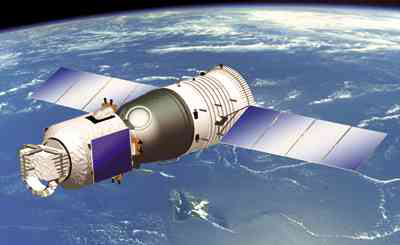China's manned spaceflight program was officially approved in 1992. And its first unmanned experimental spacecraft, Shenzhou 1, lifted off from Jiuquan Satellite Launch Center on November 20, 1999. Shenzhou 1 successfully landed in central Inner Mongolia after 21 hours in orbit, accomplishing its maiden flight. This successful flight laid a solid foundation for Chinese manned Spaceflight. Since then, Shenzhou 2 was successfully launched from Jiuquan Satellite Launch Center on January 10, 2001, and Shenzhou 3 was successfully launched On March 25, 2002, and Shenzhou 4 was successfully launched on December 30, 2002.
Shenzhou 5 manned spaceship indigenously developed by China, was launched into space at 9:00 am (Beijing Time) on October 15, 2003 from Jiuquan Satellite Launch Center. It was China's first manned spaceflight mission. Shenzhou 5 entered predetermined orbit at 9:9:50 a.m. with astronaut Yang Liwei, who was 38 years old then and he is one of the first generation of astronauts trained in China. For 21 hours and 23 minutes in orbit, making 14 orbits around the Earth and flying 600,000 km, he successfully landed on the primary landing site in Inner Mongolia at 6:23 am on October 16,2003. This launch made China the third nation in the world to independently develop manned spaceflight, after Russia and the United States.
Shenzhou 6 was successfully launched at 9:00 am on October 12, 2005. Shenzhou 6 carried two astronauts for five days and safely returned to Earth at dawn on October 16, 2005, making China's manned space technology more mature. Shenzhou 6 mission was China's first multi-person and multi-day spaceflight mission and laid a foundation for future astronauts to work and live in space station. For the first time, the astronauts were able to enter the orbital module. They moved between the re-entry and orbital modules, carrying out the tests of closing the hatch of re-entry capsule and leak-checking under weightlessness situation. It was the first time for China to have men engage in scientific experiments in space.
Shenzhou 7 was launched on September 25, 2008, and successfully put three taikonauts into space. On September 27, Zhai Zhigang made a monumental spacewalking, which means China's first step into space. During this mission shenzhou 7 also sent a small satellite into space. Shenzhou 7 safely landed on earth on September 28, which means the whole mission was completely successful. During the shenzhou 7 mission, Chinese taikonaut made a spacewalking for the first time, making a great leap in space technology, which was an announcement to the world that China had become the third one to grasp key technology in spacewalking. It was the third milestone in the history of manned spaceflight in China.














